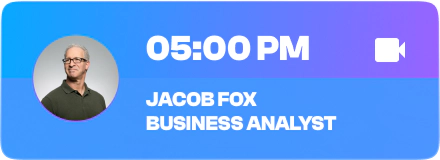An email is a complex form of communication. Sometimes it is a formal letter, and sometimes it is a regular correspondence. Today, not everyone is paying enough attention to what they say and how they say it in an email.
Unfortunately, this “quick email” mindset can be problematic, especially when you receive negative work emails. Although the sender may not have wanted to sound rude or negative, so do not immediately think that the sender wanted to offend you.
Whether it’s bad emails from your boss, an angry email from a client, or a colleague’s dissatisfaction with you, negative emails are never easy to read.
Before giving your answer, take a step back to cool off and gain some perspective.
1. Resist the urge to respond
Your first reaction after reading a bad email may be an immediate response. But responding to an equally emotional email can get you in a lot of trouble, not to mention ruining an established and important relationship.
2. Read it again
When you’re in a calmer mood, sit down and reread the letter. After all, it may not be as bad as you think. You may have read it in haste and misinterpreted the meaning of the email. Consider taking notes as you re-read it, writing down the main concerns raised by the sender. This will help you to properly answer all of their questions.
3. Don’t ignore it
After receiving a negative work letter, it is tempting to click “delete”. While this may be the right choice in some of your relationships, it is not the right choice for your professional relationship.
Now let’s take a closer look at the types of negative emails and how to respond to them correctly.
Not Interested
It may sound strange, but this negative answer is also the most positive. Why? As you know, not all cold emails get a response. You got the information. So when your prospect replies, “Thank you, I’m not interested,” or “Thank you, but I’m not sure if I need it right now,” consider yourself lucky.
Should you respond?
Yes. Always. Because a majority of the time “not interested” means:
- I don’t get it… I need more time to grasp what you’re saying
- I’m buying… but you’re not worth my time
- We are making this decision later, not now
There are several options for this letter.
- I’m not interested in the conversation right now. Please follow up later.
- I’m not interested in this, because I already work with a similar company.
- I am not interested in this because I don’t need that.
The first step is to change the part of the text in which you present your value proposition. You may be talking more about the features of your product/service rather than the benefits. If your recipients cannot immediately notice what this means to them, many of them will not be interested in talking to you. Show them what problem or question you can solve for them, or what they get by applying your solution.
A quick tip: the more specific you are, the more attractive your offer will be. So when you claim that your solution will help them raise or save money, estimate how much money they can save per month and include the number in your cold letter.
The second step is to recognize who you are sending letters to. Perhaps you are sending emails to the wrong department and you just need to change your contacts.
I’m not a good fit
Answers like these can be helpful because they indicate a potential client is not interested, the reason is that they fit your idea with the client profile. Here are some examples:
- “It sounds good, but not a fit for us at this time.”
- “Thank you for reaching out. Your offer sounds awesome! However, we are a startup, so we do not have the budget for that”
What to do if you see many “I’m not a good fit” reply?
Just make sure that your customer database is matched with all the important criteria, and that your email represents your value proposition and gives potential customers some points to refer to.
Angry letters
Angry responses are easy to spot. They are full of negative emotions, expressed in capital letters and exclamation marks, or even some kind of foul language. But an angry response doesn’t have to be impolite. Here are some examples:
- “Could you please cross my name off your list?”
- “Stop spamming me !!!”
- “Sorry. I’m getting offers like yours flooding my mailbox. STOP”
If you receive such letters too often, then the first thing you should do is copy your text. Perhaps your text is too long or contains errors.
Make sure your introductory letter is at the top of the prospect. Try adding some personalization elements other than a name to your greeting.
Also, pay attention to the positions of the people to whom you are sending letters.
When you receive an angry or not interested email, do not accept it at your own expense. People send emotional messages when they are unhappy, frustrated, or just in a bad mood. You have to act on the assumption that the letter has nothing to do with you, so that means you shouldn’t let the tone distract you from your work and professional reaction.




